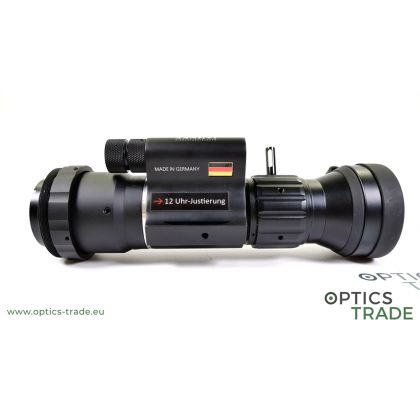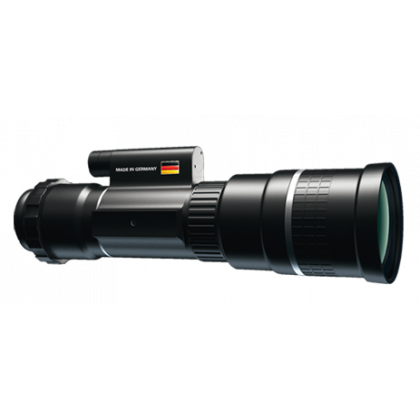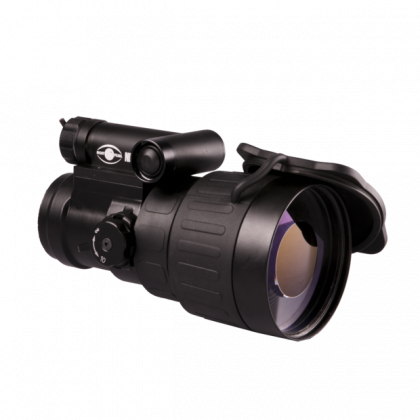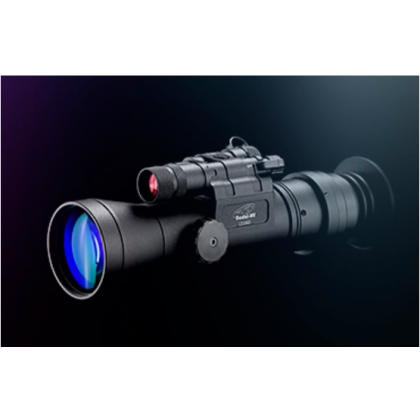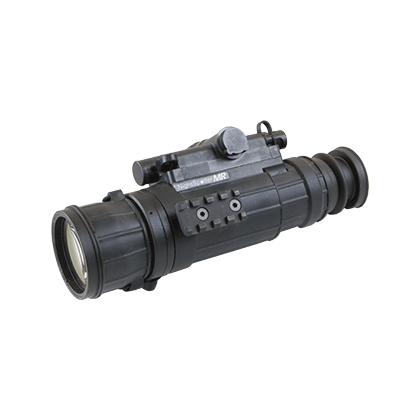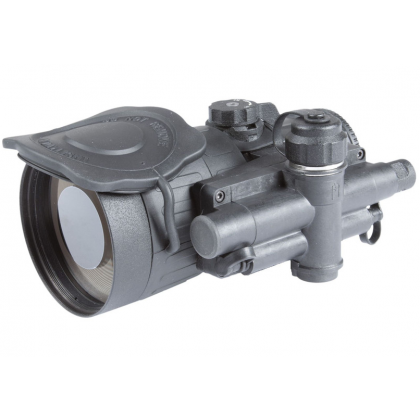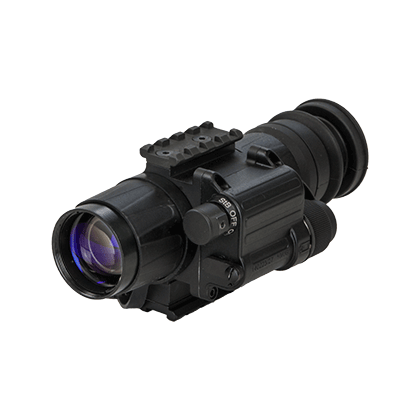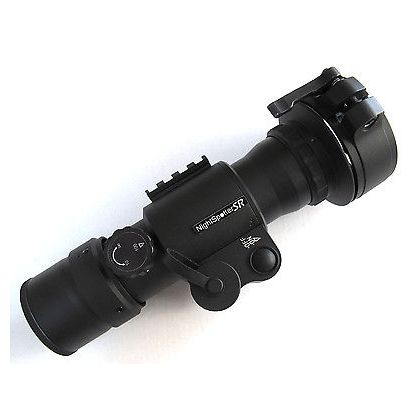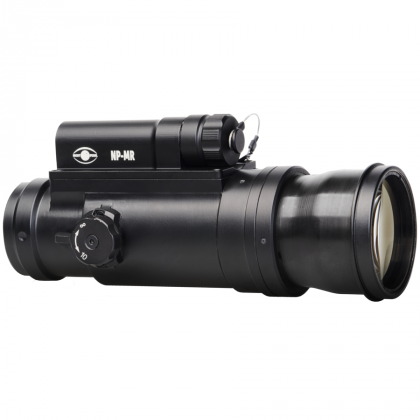Mounts
NV Clip-On Systems
When the first night vision devices were developed, the military quickly needed a rifle-mounted version of it, that could be used to engage targets during the night. This had one big disadvantage – the rifle with a mounted night vision rifle scope could be used only during the night, so for daytime operations, a mounted daytime rifle scope was needed.
An option was to swap the night vision rifle scope with a daytime rifle scope, but all weapons had to be re-zeroed after swapping. The second option was a second rifle, but that was heavy, so none of this was ideal.
Because of that, the manufacturers started to develop night vision clip-on systems which are designed to be mounted directly on the objective of a daytime optic with a suitable adapter, or with a mount on a rail in front of a daytime rifle scope. Some newer clip-on devices are even designed to be clipped on the ocular of the daytime optic. They were developed to replace night vision rifle scopes since replacing the main optic on a rifle was inconvenient, and the zero of the rifles changed.
With a clip-on device the zero does not change, so every daytime optic like a rifle scope, binoculars, monoculars (scopes), and so on, can be transferred into a night vision capable optic. Whatsoever, it is important that the magnification of the daytime optic is not too high. The optimal magnification ranges from 1x to 6x, but some high-quality night vision clip-on devices are capable even over 10x.
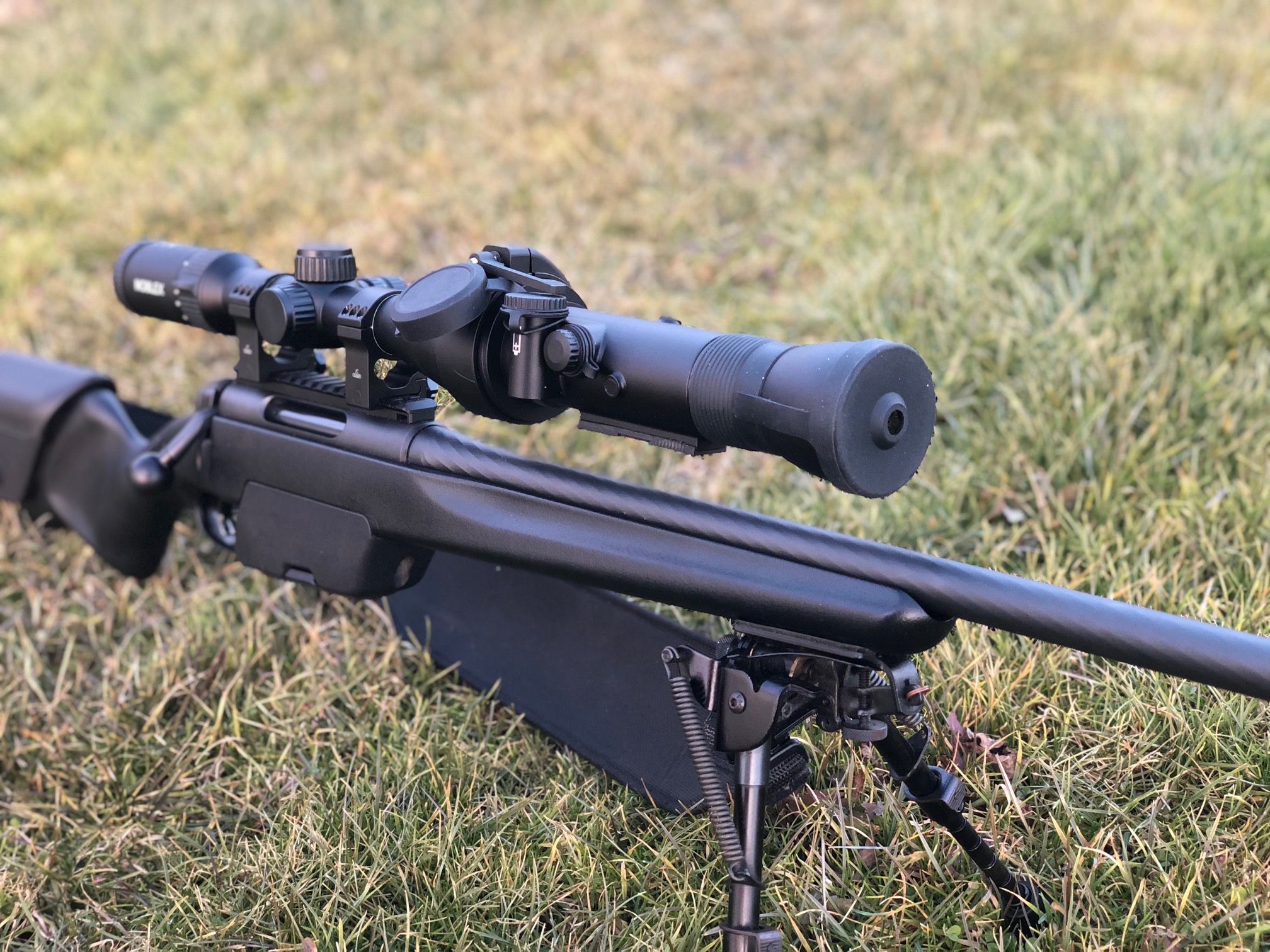
Most common use examples
Night vision clip-on devices are very popular for professional use since almost every daytime optic can be equipped with. Also hunters swear on clip-on devices because most of them can also be used for observation purposes. They offer an intensified picture during night time observations, so the user can detect animal life in complete darkness.
Thanks to that, one device can be used for all hunting scenarios, so the user has to buy only one device for the night hunt. That is also a lot cheaper than separate night vision binoculars, or another night vision device.
Clipping the night vision clip-on device on a daytime optic can be done only in a matter of seconds, so if the device is used on a binocular or a monocular, it can be very quickly swapped and clipped on a rifle scope to engage the animal during the hunt.
EU laws for NV clip-ons
Owning a night vision clip-on device is not forbidden in most countries in the European Union. They can be used for observation purposes, but mounting them on a daytime rifle scope is in some countries forbidden. They can be, whatsoever, be used for hunting abroad.
Because these laws are constantly changing, we recommend you to make some research about owning and using it in your countries.
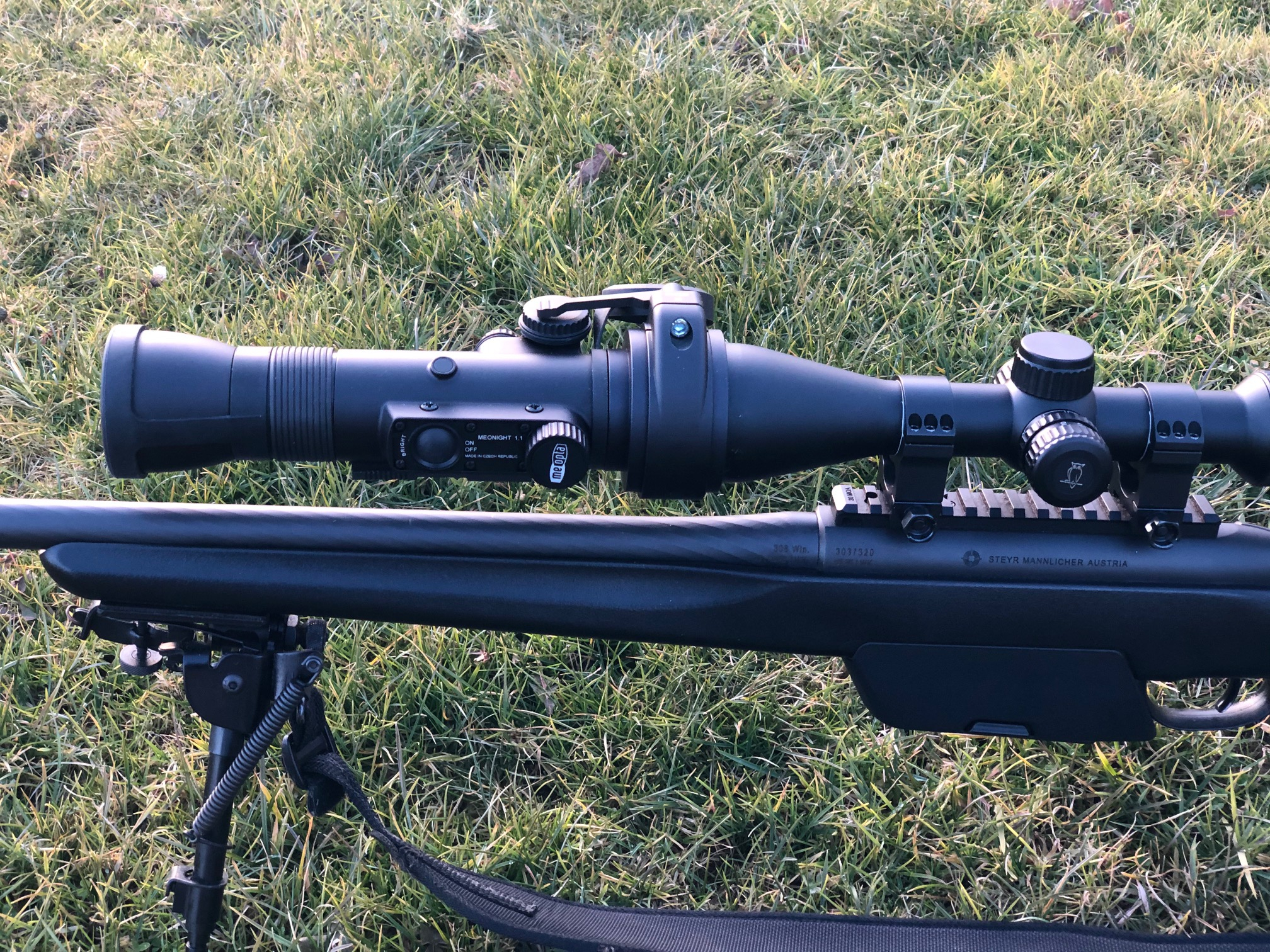
Night vision scopes (monoculars) vs. NV clip-ons
Night vision scopes (monoculars) are designed for observation during the night. But so are the night vision clip-on devices. So, what are the main differences?
Night vision clip-on´s are designed to be mounted on the ocular or on the objective of a day time optic. So, these devices can be used in combination with regular daytime scopes, binoculars, or even rifle scopes.
To do so, the ocular has to be designed differently – so that the user gets the best possible image when it is mounted on a daytime optic. Now, this doesn´t mean that observation without a daytime optic is not possible, but the image is small and when looking into a clip-on, it looks like the image is in a tunnel (away from the eye). Many night vision clip-on devices do also not feature a diopter adjustment for focusing, but only the parallax adjustment.
Night vision clip-on devices are also designed to withstand the recoil of a rifle. Before buying, you always have to be careful that the device can withstand the recoil of your caliber. Many clip-on´s on the market are designed for calibers up to .308 Winchester and similar, so if you want to use it on a stronger recoiling caliber, the internals of the device can get damaged.
Many users try to attach their 1x magnification scopes (monoculars) to their rifle scopes with special adapters. These are mostly available for attaching the device on the ocular of a rifle scope. This is very common among airsoft players, but we would strongly NOT recommend attaching these on a centerfire caliber – it can be very dangerous! Doing that can damage the internals of the night vision monocular, but it can get even worse – to look through an NV monocular, you have to be very near (almost touching the ocular of the NV device). So when the shot is fired, because of the recoil, it can hit you in the eye.
Green vs. Black & White IIT
An IIT or Image Intensifier Tube is the main component of an analog night vision device. It is the component that amplifies the light and tells us how good we will see in dark areas. It tells us also how many times the light gets amplified through the device. The generation of the IIT makes the main difference, but Generations 2 and Generations 3 IIT´s can be ordered also in black & white or green, which makes also a difference in the image quality.
The differences in the color of the image are not big, but both have some advantages.
-
For many users, observing for a long period is more comfortable with an NV device that features a green IIT since the green color is more soothing for the eyes.
-
The green IIT´s have often a brighter appearance, but the detail recognition is mostly better with a black & white IIT.
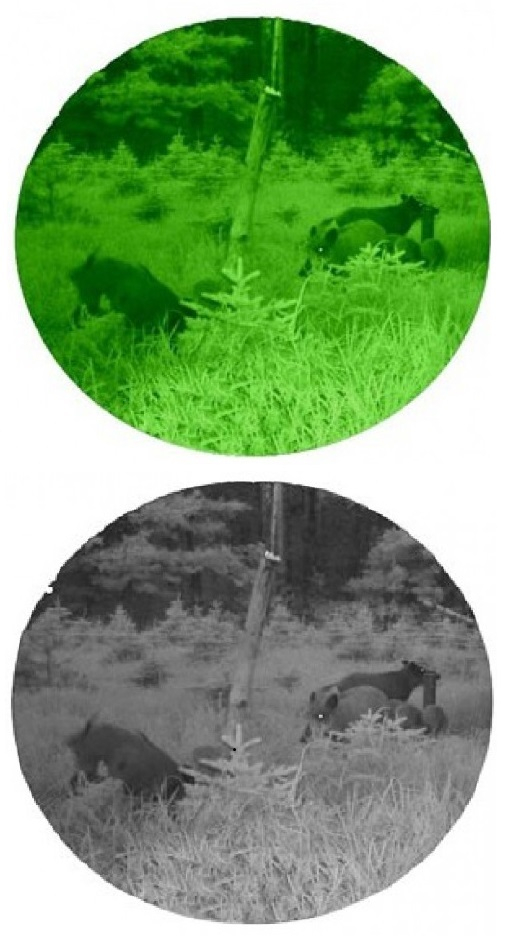
It is also worth mentioning those Night vision devices which feature a black & white image intensifier tube are in most cases more expensive than the green ones.
Digital vs analog night vision
Night vision devices are available in many different shapes and sizes. Years ago, only analog scopes were available on the market. These were, and still are, available with different image intensifier tubes, which, in the end, tell us the price and the quality of the image.
Analog night vision devices
The cheaper devices feature a Gen. 1 image intensifier tube, but these are very limited in the distance of observing and also the performance in darker areas. The use of an additional IR light is in most cases needed. The better night vision devices feature a Gen. 2 or even a Gen. 3 image intensifier tube. With these, the detection range extends, but also the price is a lot higher.
With an analog night vision device, you see the image directly through the device without a screen. This means the device has no refresh rate, so the image is displayed in normal time without any delay.
Analog night vision devices normally do not feature any additional features. Only a few on the market offer an integrated laser range finder.
The battery consumption is very low, so a small capacity battery can last up to 5x more or even longer, compared to a big capacity battery in a digital night vision device.
Digital night vision devices
Since digital night vision devices work with converting the image to an electrical signal, they all have a refresh rate. The refresh rate tells us how many pictures we see in one second. High-quality digital night vision devices have a refresh rate of 50 or even 60 frames per second With such a fat refresh rate the user sees a nice and smooth picture. If the refresh rate is too low, then fast-changing frames can be seen. This drastically affects the viewing experience.
Also the display the user is looking at has an important role. The resolution of the display has to be good, so the displayed image is better, and the user cannot see every single pixel.
Digital night vision devices are a lot cheaper than Gen. 2 or even Gen. 3 analog NV devices. With the combination of a high-quality IR illuminator, the digital NV device can be very useful also on greater distances. In most cases, they perform even better than Gen. 1 night vision devices.
With digital night vision devices, the user is not forced to use only the fixed magnification, like with analog NV devices. The magnification can be changed digitally, which is, to a certain degree a great feature. With big digital magnifications, whatsoever, the image gets pixelated.
Digital night vision devices have one big advantage against analog devices – it is possible to take photos and even videos. These can be easily sent to a smartphone, tablet, or even a computer. With an analog night vision device, this is not possible.
Digital night vision devices can also be used during the day since the bright light cannot damage the sensor. This is not the case with an analog night vision device, because exposing the device on a sunny day can damage the image intensifier tube.
Adapters for night vision clip-ons
To mount a clip-on device to a daytime optic, an adapter is needed which clamps directly on the objective or the ocular of the daytime optic. With many clip-on devices such an adapter is included, for the most common outside diameters. Some manufacturers include also additional plastic reduction rings, to fit even more optics on the market. The included adapters are normally made of hard plastic, which does not have a high quality.
If the daytime optic has a different outside diameter then which is included, an aftermarket adapter is needed. The most known aftermarket adapters which have a high-quality come from companies Rusan and Smartclip. They are made of aluminum and feature a small micro-adjustment screw for the perfect fit on the optic. Inside these adapters is also a protection tape, so the daytime optic can not get damaged or scratched when mounting.
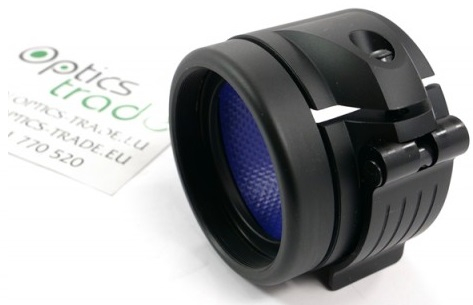
Smartclip Adapter
Some clip-on devices, like Pulsar, for example, have a brand-specific mounting solution. These need a special adapter or a special reduction ring (converter) that fits the normal adapter. If the clip-on device has a specific outer thread that is different than the one in adapters, a different reduction ring can be used to pair the device with the adapter.
A short presentation of NV Clip-On Systems is available here.
Filters
Sort
Filters
Sort

